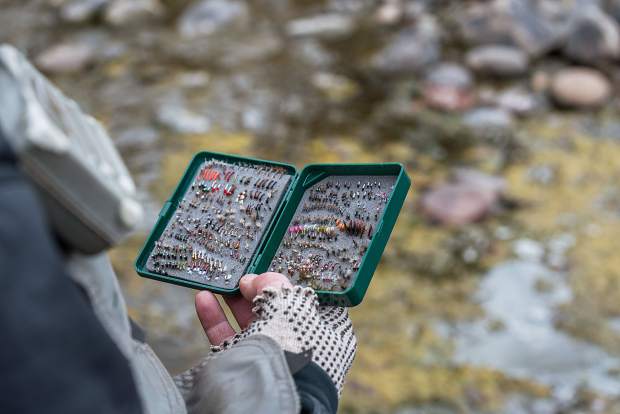Special to the Daily
My vice is my vise.
I spend a lot of time (especially during the football season and the winter months) behind my fly tying vise.
When I first started tying, I bought the cheapest vise setup that came with “all the tools”. I would spend hours using that vise, learning how to tie the basic flies that any beginner would start with. That vise did its job and held my hook in place while I wrapped different materials on to it.
However, I quickly realized I was spending a good amount of time tying, so it was time for me to upgrade my vise. I’m going to go through the things that I looked for when I was shopping for a new fly tying vise.
Cost
The cost of a vise can range from $30 to more than $1,000. Obviously, you don’t need to break your bank for a decent vise, however it is a good idea to have a price point in mind when shopping.
Expect to pay $100-$300 on a vise that will last you a very long time and will function the way you need it to. There’s a lot to choose from in that price range, do some research and read some reviews. I know it’s tempting to buy a $30 vise, however after briefly using it you will want to invest in one that will stand the test of time.
That cheap vise is a great way to get into tying and can be passed along to your buddy that’s been bugging you to teach him how to tie for a twelver of your favorite adult beverage.
Base or C-Clamp
The next thing you want to consider when shopping for a vise is how you want to have the vise mounted on the area you plan on tying. A c-clamp attaches to the edge of a table, bench or desk. This is a solid connection that won’t move much while tying and is very portable. The only drawback is you may leave marks on the surface you are attaching your vise to. The other popular style is a pedestal base. This base is typically a flat, very heavy piece of metal with a hole to place the shaft of the vise in and tightens with a screw or bolt. These bases are very sturdy and can be placed on any surface, even your lap. Due to the weight of these bases, they are not as portable, however many companies make travel bags to help transport vises.
Rotary or Stationary
The next decision that needs to be made is if you want a stationary or rotary vise. A stationary vise is a standard vise that does not move, whereas the rotary gives you the ability to rotate the vise “head”. I started with the standard stationary vise and it worked great when I was learning how to tie.
Over time I wanted more out of my vise and a rotary vise is that next step. The rotary function allows you to wrap materials around the hook by turning the vise head. It also allows you to view the fly you’re tying from all angles to make sure that it is the same on all sides. Rotary vises are more expensive but they also are the next step for many tyers.
All in all, a vise is necessary to start tying flies and there are some choices that need to be made before you select a vise to learn on. If you have the means to purchase a nice rotary vise at the beginning, I would highly suggest doing so.
If money is a bit tight, go ahead and get an inexpensive vise to learn how to tie and see if you like it or not. Beginner sets are great to get some necessary materials, tools, and a starter vise. Once you realize that tying is your thing, you can upgrade your vise and hand down your beginner vise to your buddy.
Ray Kyle is the shop supervisor and a guide at Vail Valley Anglers. He can be reached at 970-926-0900 or rkyle@vailvalleyanglers.com.
Credit: Source link






























